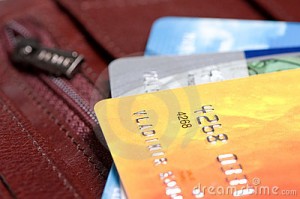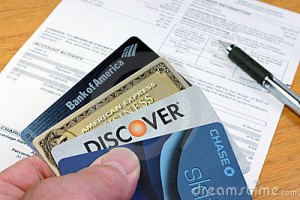Credit card and phone fees—wasteful ways to blow a hole in your budget
Savvy travelers probably know these things, but I know some who are still behind the curve and going abroad soon. So here’s an update: Though many report having no problems at all using their US mag-stripe cards and ordinary ATM cards abroad, make sure your credit or debit card has a smart chip. The global standard is “chip and PIN” technology, meaning you’ll need to enter a PIN after the terminal reads the card’s chip. Call your credit card company and ask for a new card with a smart chip for the “chip and signature” option. Most cards without the chip will still work sans-PIN at most automated kiosks though, since a signature is generally not needed for purchases under $50.
Another thing to keep in mind when pulling out the plastic abroad: When in doubt, go with the debit card. Though your bank likely charges a currency conversion fee in transactions abroad, credit card fees are usually almost twice as high as debit card transaction fees. Capital One does not charge foreign transaction fees at all, so it may be worth getting one just for your travel use. If you want other card options, the helpful site NerdWallet.com has a list of cards that don’t charge them either.
Roaming charges for calls can be another “under the radar”-type budget buster. Smartphone users can rack up big roaming fees unless they remember to switch on the device’s Airplane Mode and Wi-Fi when boarding the flight to a far-off place. Also remember to switch off the cellular mode.
Data usage costs more money overseas, but the International Data Plans from your provider are rarely the best option anyway; use Skype or Truphone instead (I’m a big fan of Skype) and, with a decent Wi-Fi signal, you can make international calls for dirt cheap. Estimate how much usage you’ll need. There is the ever-handy pay-as-you-go option or a monthly, flat-fee plan that allows unlimited calls in certain countries.
Alternatively, Facebook’s Vonage Mobile app enables globetrotters to make free international calls over Wi-Fi to Facebook friends who also download the app. If caller and recipient have iPhones, FaceTime is a great deal with one flat fee.
Now go have some fun!




June 8th, 2012 at 4:11 am
This is terrific info, and will help a lot of travelers! Thanks, Mr. James Ullrich!
June 8th, 2012 at 2:22 pm
Unfortunately as of about a week ago Capital One no longer offers a ‘no ATM fee’ account. For people who already have a no fee account there are no changes. Charles Schwab still offers a no ATM fee account and I’m sure there are others on nerd wallet.
Interesting about the chips…..I’ll have to look into that!
Cheers
June 11th, 2012 at 9:06 pm
Living in Colombia last year I spent almost 200€ in ATM fees, so as i came back to Italy this year I had to found a card with no fees and I found it.
It worked great in Japan but as I arrived yesterday in Seoul airport I had my first bad surprise.
Not only the Korean bank charghed 3.000won (2€, 2,5$) commission, they try to cheat me offering to be billed in Euro with a rate much lower than the market one.
In fact I choosed to be billed in won and I have been billed 103€ by my bank instead of the 108€ suggested by the korean.
So, never choose to be billed in your home currency if some foreign bank try to trick you
June 12th, 2012 at 7:47 pm
I can confirm clodio’s last suggestion. My twopence: always withdraw the maximum daily allowance from your debit card, as fees normally are one-off, whatever the sum you get (YMMV, so check beforehand). Re: roaming fees: some conpanies now offer sim cards with no roaming charges in many countries…